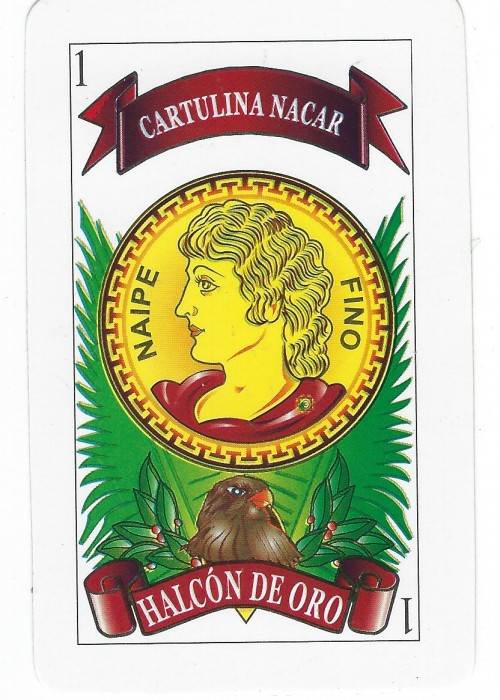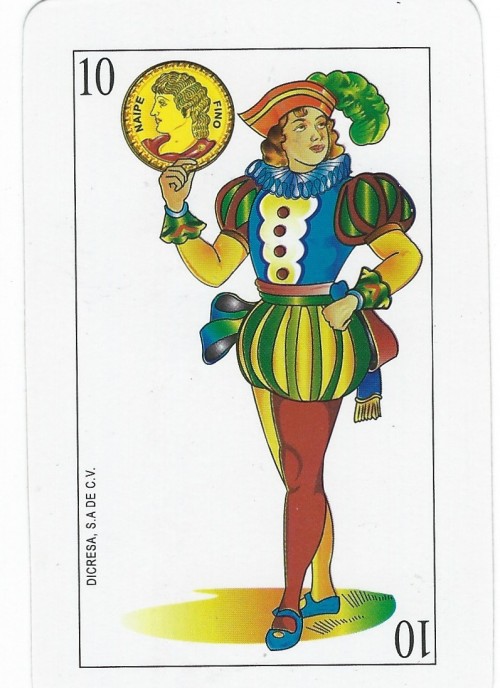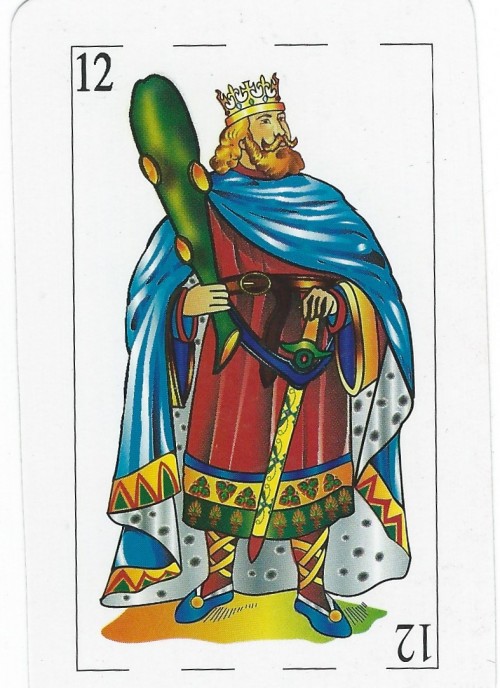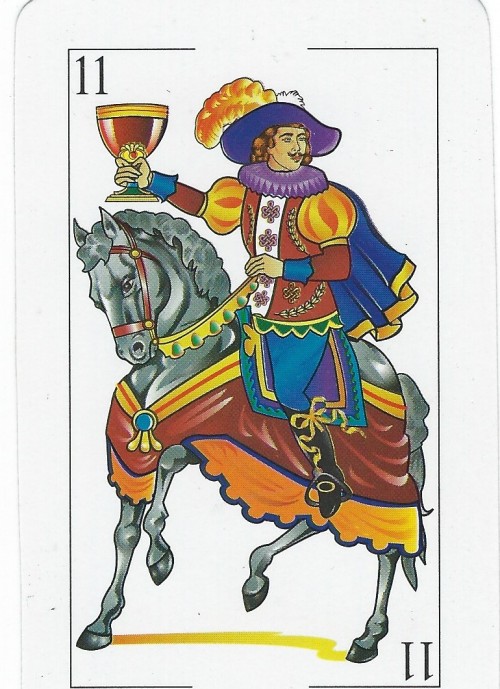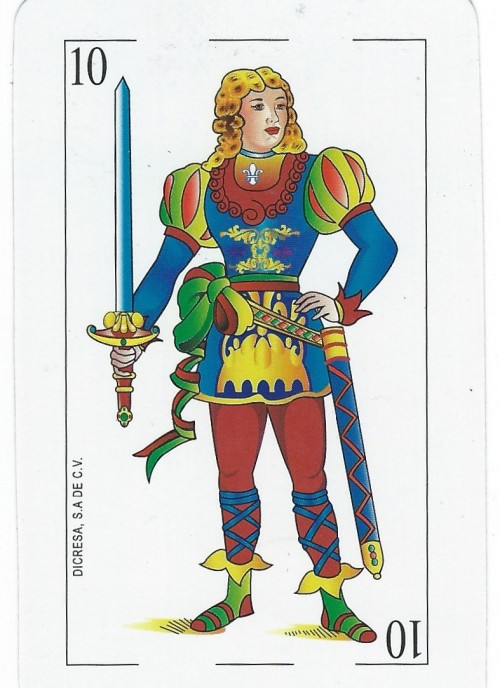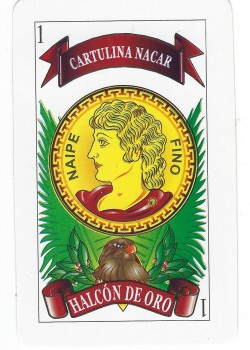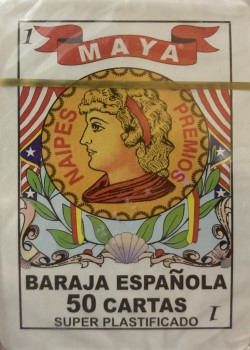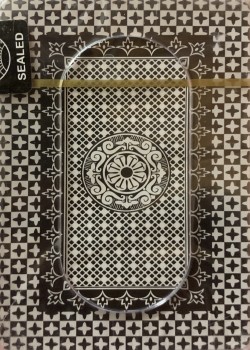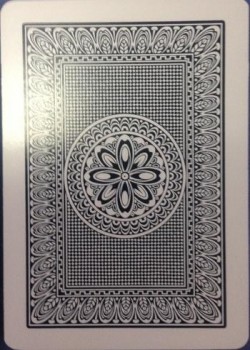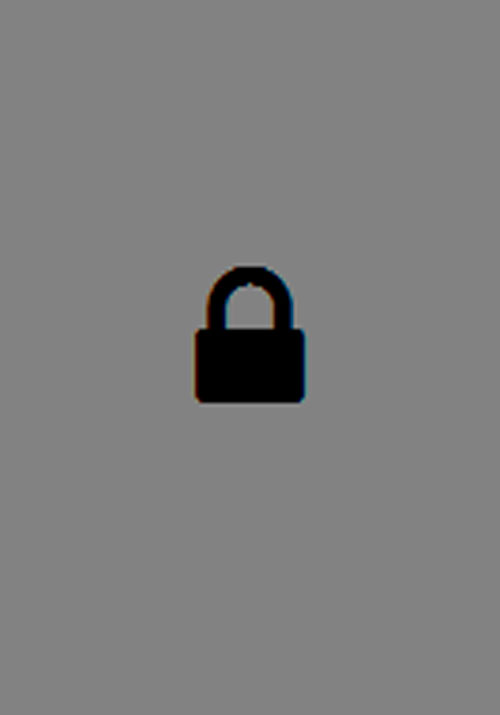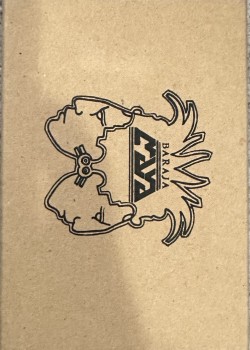ABOUT THIS DECK
Stripped Mexican deck in clear plastic case. Produced by Halcon De Oro (Golden Falcon). The Cartas ("cards"), also known as Baraja Española ("Spanish deck"), are the playing cards associated with Spain. They have four suits and a deck is usually made up of 40 or 48 cards.The suits closely resemble those of northern Italian cards and Italian tarot decks. In fact, the Baraja, like the tarot, are used for both game playing and cartomancy. The Baraja have been widely considered to be part of the occult in many Latin American countries, yet they continue to be used widely for card games and gambling, especially in Spain. 48-card decks have nine ranks of pip cards (1-9) and three ranks of face cards (10-12). They are usually sold with two comodines (Jokers) for a total of 50 cards. Stripped decks have 40 cards and lack ranks 8, 9 and comodines. The four suits are bastos (clubs), oros (literally "golds", that is, golden coins), copas (cups) and espadas (swords). Unlike the suits found in northern Italy, Spanish swords are straight and the clubs resemble knobbly cudgels instead of ceremonial batons. Swords and clubs also don't intersect (except in the 3 of clubs card). The popularity of the stripped deck is due to game of Ombre which became a craze throughout Europe during the 17th century. Each card has an outline frame to distinguish the suit without showing all of your cards: The cups have one interruption, the swords two, the clubs three, and the gold none. This mark is called "la pinta" and gave rise to the expression: le conocí por la pinta ("I knew him by his markings"). La pinta first appeared around the mid-17th century. The three face cards of each suit have pictures similar to the jack, queen, and king in the French deck, and rank identically. They are the sota, which is similar to the jack/knave and generally depicts a page or squire, the caballo (knight, literally "horse"), and the rey (king) respectively. There are instances of historical decks having both caballo and reina (queen), the caballo being of lower value than queen.The Castilian pattern is the most widespread pattern in Spain. It was designed and published by Heraclio Fournier in 1889 and by the early 20th century had displaced the older patterns in Spain. Despite being called Castilian, the cards were first produced in Fournier's headquarters in Vitoria-Gasteiz, the capital of the Basque Country. Fournier made some noticeable innovations to Spanish cards such as giving the kings beards, adding faces to the coins, dagger-like swords, and red cups. Figures wear fantastic pseudo-medieval costumes. Decks come in packs of 40 or 50 cards.
The Mexican pattern was derived from the Castilian in 1923 by Clemente Jacques. The knights wear wide brim hats but its most notable feature is the conversion of all the knaves to female. They come in decks of 40 cards but 50 card decks were once produced.
COMPANY:Halcon De Oro
EDITION:N/A
COLLECTIONBridge
RELEASE YEAR:N/A
CARD STOCK:N/A
FINISH:N/A
COURT ILLUSTRATION:N/A
STYLE:N/A
